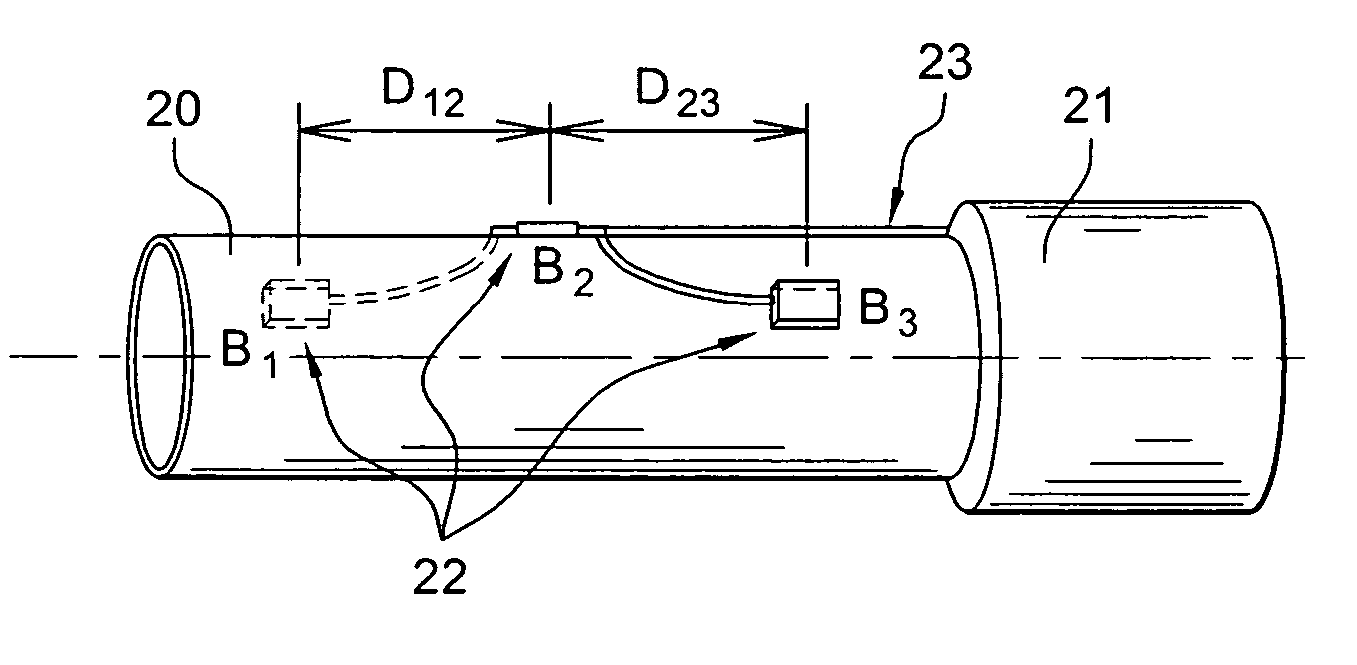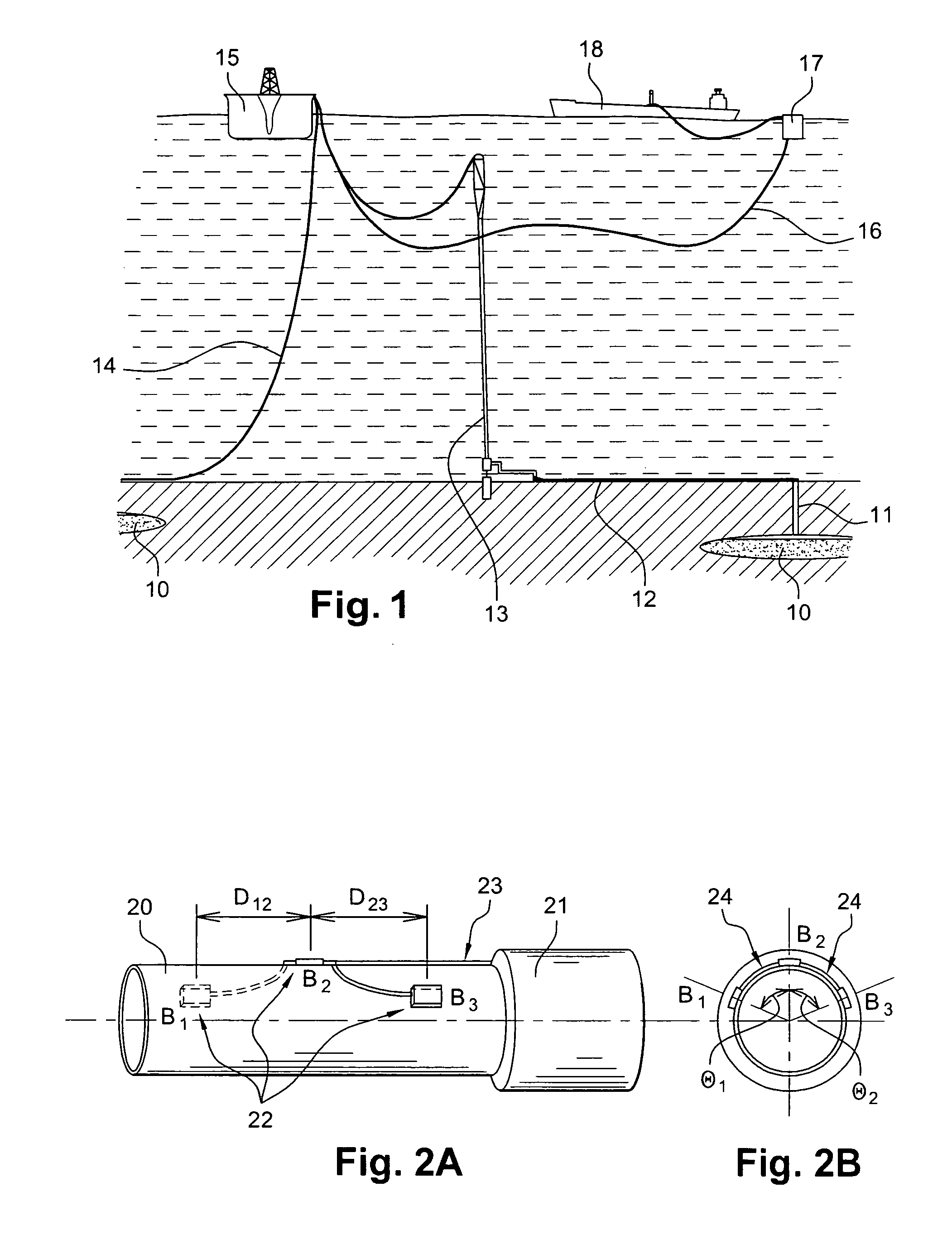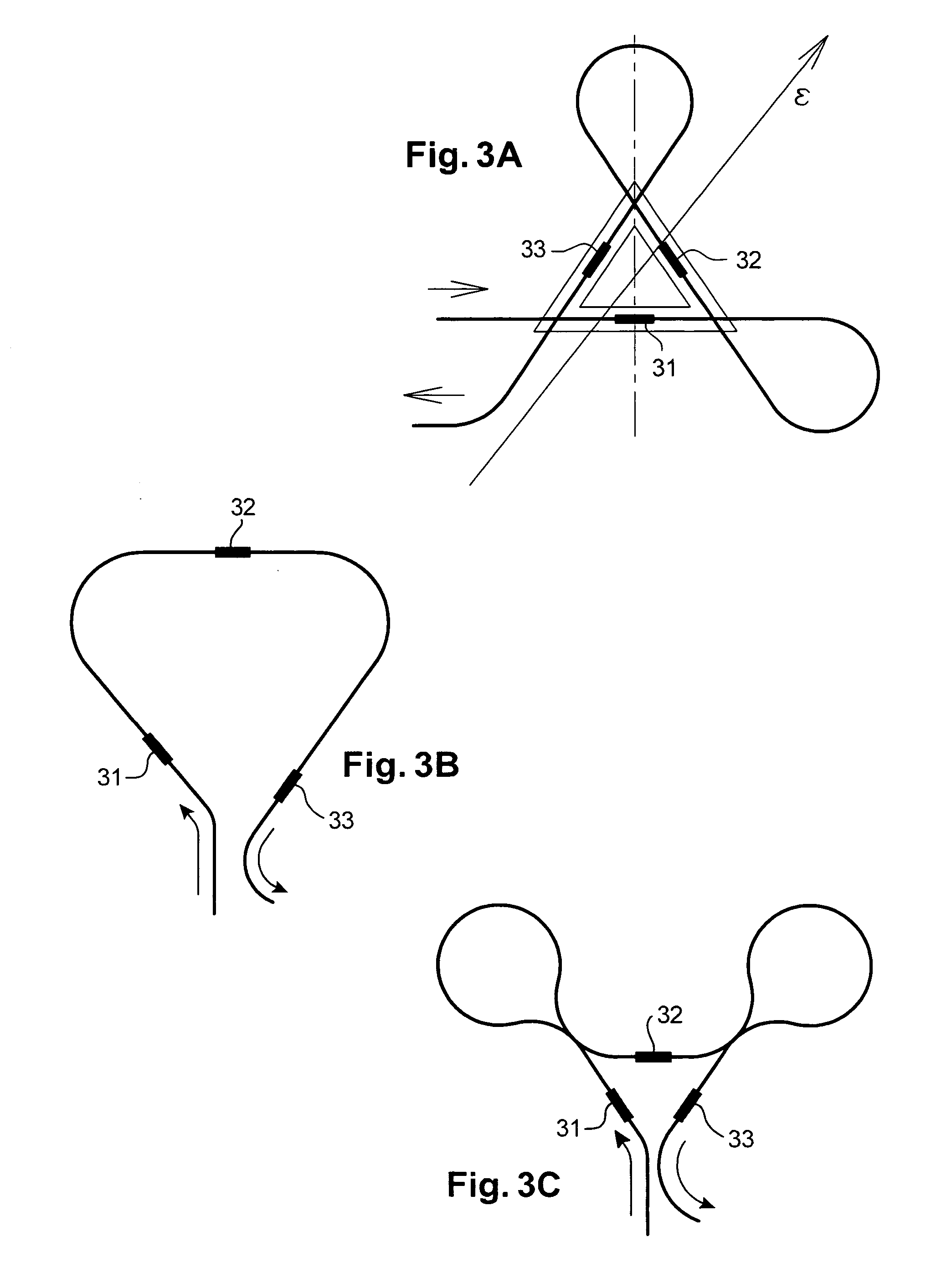Instrumented Tabular Device for Transporting a Pressurized Fluid
a tubular device and pressurized fluid technology, applied in the direction of optical conversion of sensor output, fluid removal, survey, etc., can solve the problems of cumulated stress and fatigue, significant cost, and scarce deposits
- Summary
- Abstract
- Description
- Claims
- Application Information
AI Technical Summary
Benefits of technology
Problems solved by technology
Method used
Image
Examples
first embodiment
of the Invention
[0064] In this first embodiment, the three locations 22 are occupied by casings, in which three sensors insulated from the external hydrostatic pressure, are positioned respectively. Each instrumented portion of the device of the invention, illustrated in FIG. 2 after removing the heat insulator 21, comprises a preassembled assembly consisting of a least one central casing B2 and two side casings B1 and B3, preformed tubular connectors 24 (with the tube diameter) connecting the casings with each other and a remote optical fiber (or “offset” optical fiber) 23 connecting the central casing B2 to the measurement instrumentation located at the surface. The casings are installed along the axis of the tube (for example every decimeter) and according to different angular orientations. In the remote cable (or “offset” cable) leading to the instrumentation at the surface, a set of three casings therefore corresponds to one optical fiber.
[0065]FIG. 2B shows a distribution of ...
second embodiment
of the Invention
[0071] In this second embodiment, the device of the invention is instrumented with sensors located in locations similar to those of the first embodiment. This time, the sensors are directly adhered to the tube without protective casings against the external hydrostatic pressure. The sensors of a same instrumented portion of the device of the invention, or double-joint sensors, are connected to each other through a remote optical cable, which is connected to a main optical cable at a distribution box, positioned at the head of the instrumented portion. The sensors and the remote optical cable are embedded in a coating which seals them from the external medium, hermetically. The main optical cable connects the distribution box and the instrumentation located at the surface. This distribution box enables the seal of the main and remote optical cables to be guaranteed. The distribution of the optical fibers along the tube in multiple instrumented portions is provided in ...
PUM
 Login to View More
Login to View More Abstract
Description
Claims
Application Information
 Login to View More
Login to View More - R&D
- Intellectual Property
- Life Sciences
- Materials
- Tech Scout
- Unparalleled Data Quality
- Higher Quality Content
- 60% Fewer Hallucinations
Browse by: Latest US Patents, China's latest patents, Technical Efficacy Thesaurus, Application Domain, Technology Topic, Popular Technical Reports.
© 2025 PatSnap. All rights reserved.Legal|Privacy policy|Modern Slavery Act Transparency Statement|Sitemap|About US| Contact US: help@patsnap.com



